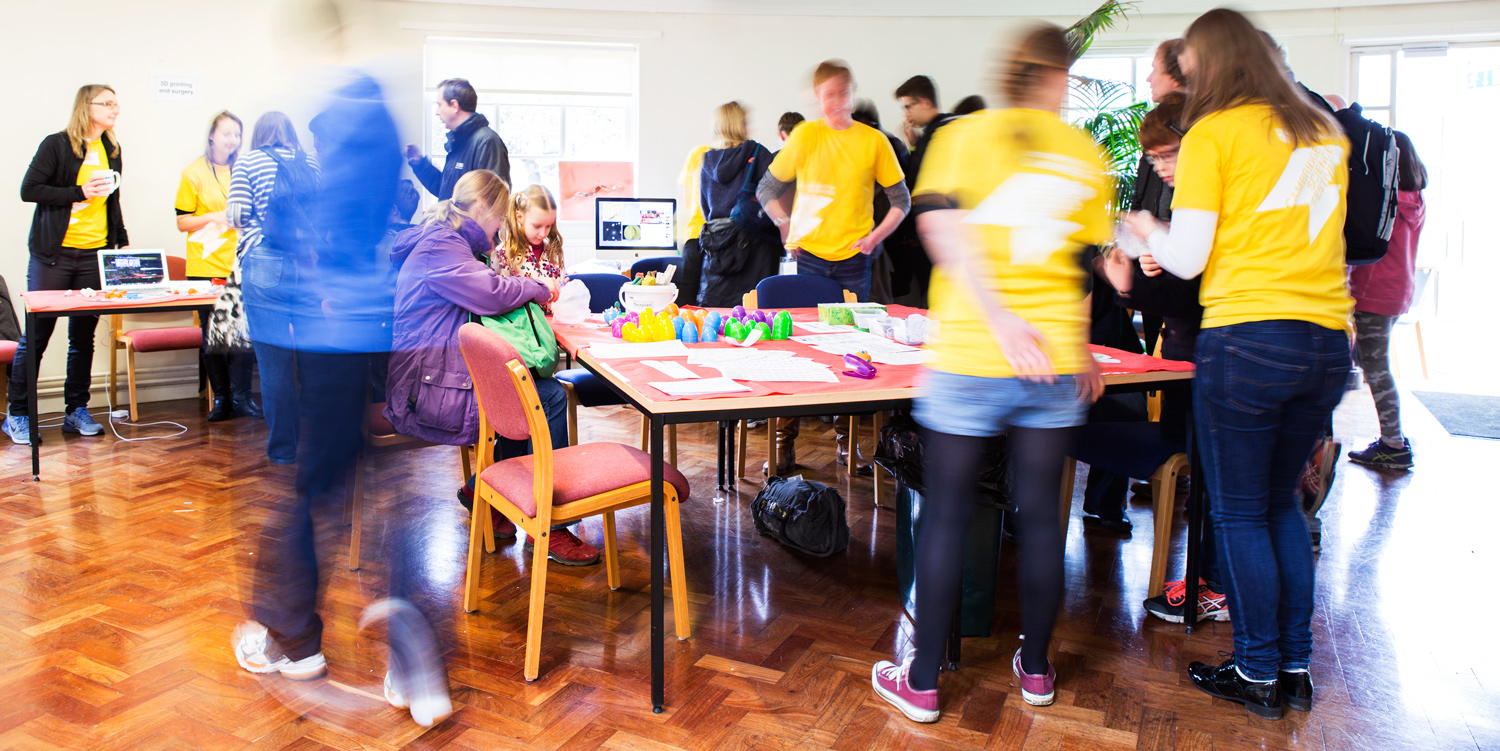Bethany Dearlove computational biologist
Vet School at the Cambridge Science Festival

This year Anaid Diaz, Jackie Brearley and I co-organised the Department of Veterinary Medicine’s contribution to the Cambridge Science festival. It was a huge team effort - thank you to everyone to everyone who got involved and made it such a success! The theme of the day was One Health, showing how, by studying animal and human health side-by-side, we can use the latest technology and methods to treat patients, quantify the risk of infection and predict epidemics. During the day, we created a disease outbreak map, marking where people had travelled from. Had some of the bacteria models being made been real, we could have spread a lot of disease around Cambridgeshire, but also as far as the Netherlands, Spain, Turkey and even Japan!
The Senior Common Room was filled with hands on activities representing the diverse research in the department, including:
- Bats and Bugs
Bat colonies (well, soft toy ones) temporarily moved into the trees outside the Vet School. Some of the colonies housed radio-tagged bats, and visitors were invited to try and find them, to show how bat movements can be tracked to better understand disease transmission.
- Build your own bacteria!
What might the perfect bacteria look like? In this activity, children got to design and build their own model bacteria, thinking about what genetic features (glowing in the dark? antibiotic resistance? being able to communicate?) would make a good microbe living in different types of environments.
- Edible DNA models and hidden message bracelets
How better to learn about the structure of DNA than by using sweets?! A couple of strawberry lances, some gummy bears and cocktail sticks later, and visitors had their very own edible DNA helix to take home. Visitors then learnt about how DNA holds the recipes for making proteins by creating secret message beaded bracelets.
- Eye to eye with a dog
What does a dog see? What does the inside of its eye look like? Participants got to examine a model eye, and then used a video opthalmoscope to look into the eyes of one of our resident greyhounds.
- Lego genetic epidemiology
How can the recent revolution in genetics help us understand the spread of infectious diseases better? In this activity, visitors first assembled a viral Lego ‘genome’ and then used it forensically who track gave the virus to whom. A game of Plague Inc. was also on hand, with several members of the public defeating the game, wiping out all of humanity by successfully mutating their pathogen of choice.
- Natural selection: building animals by random chance
How do different forms of live evolve? This activity explained how different types of animals have arisen by using dice to simulate natural variation in insect body parts. A number of colourful and exciting insect combinations were obtained!
- Building the dog skeleton
At this activity, visitors were given the opportunity to learn how bone fractures can be surgically repaired. Most exciting were the 3D printed plastic bones, which can be used to design better tools to guide surgeons when operating.
- Disease spillover and zoonosis
How rare is it for an infectious disease to spread from animals into humans? In this activity, balls representing various viruses were rolled at gates representing different levels of transmission. Getting to the first gate, human-wildlife interaction, with relatively easy for all the viruses, but, just like in real life, sustained human-to-human transmission resulting in an epidemic was much harder.
- What microbes do for us: the science of composting and food recycling
Using a microscope, visitors discovered some of the diverse microorganisms living in compost and their importance to ‘macroscopic’ life (plants, animals and humans).
Meanwhile, a series of talks was hosted in the nearby Lecture Theatre 2 with exciting and often interactive presentations given by Mark Holmes, Matthew Allen, Kate Hughes, Andrea Strakova and Andrew Conlan.
March 19th, 2016 by Bethany Dearlove